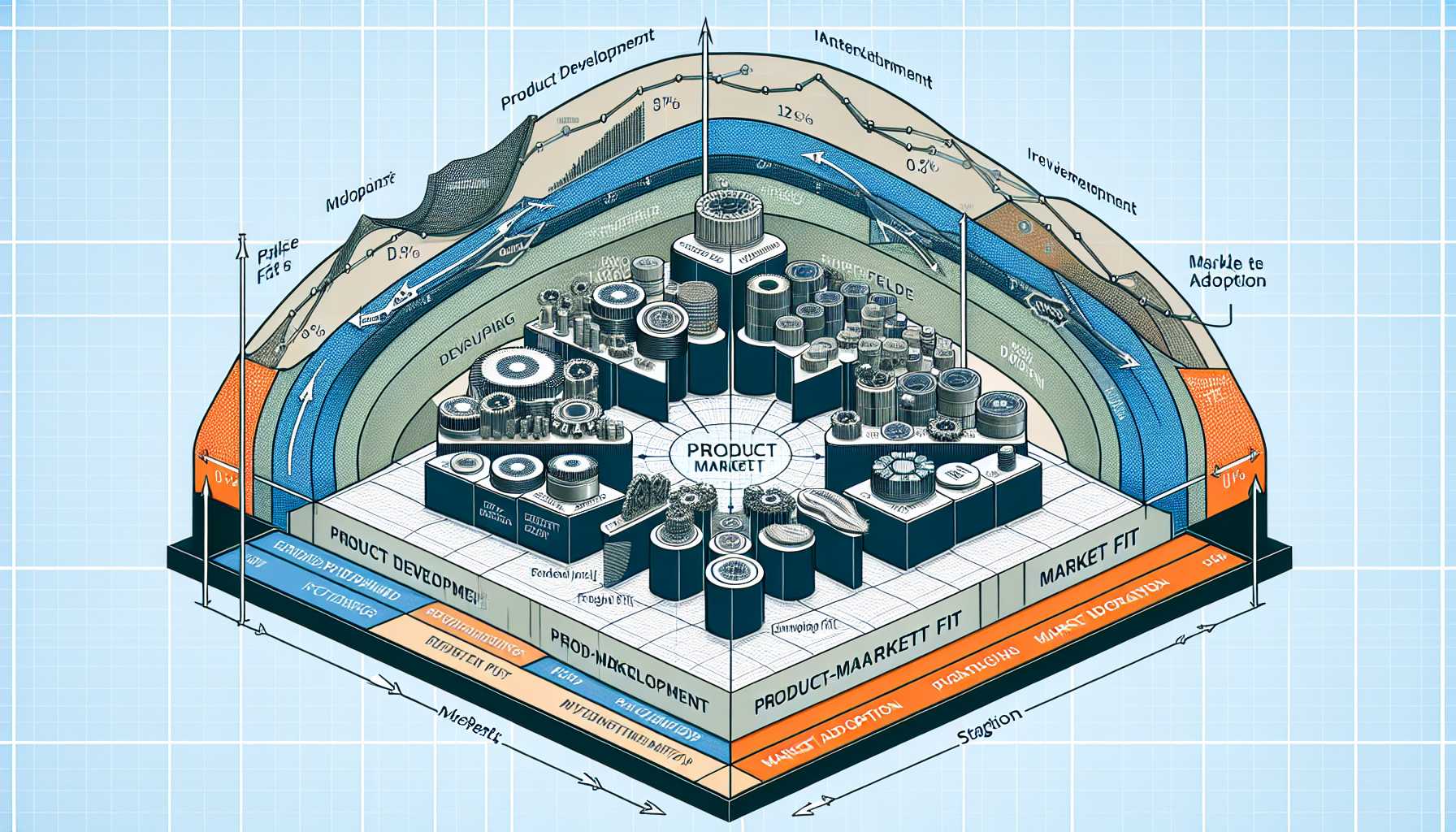Welcome back, product leaders. Crafting a software product that resonates with its market is akin to writing a symphony—it requires harmony, precision, and, most importantly, an understanding of the audience’s rhythm. Today, we’ll explore techniques to confirm product-market fit, a critical success factor for any new software endeavor, through a blend of industry-proven frameworks and personal retrospection.
Scouting the Horizon: The Quest for Product-Market Fit
Product-market fit is the sweet spot where user needs meet product capabilities—a melding of demand, usability, and satisfaction. Let’s consider the stories behind the strategies that can guide us to this elusive alignment.
Defining Product-Market Fit
Before we dive into techniques, let’s understand what product-market fit feels like. It’s not just about selling your software—it’s a scenario where your product not only fills a gap in the market but does so in a way that is scalable and sustainable. It is when customers become advocates, churn rates dwindle, and user engagement surges.
Gauging Market Needs with Empathy
It begins with empathy. A deep, qualitative understanding of your customers, beyond market segments and personas, is essential. The Lean Startup’s ‘Build-Measure-Learn’ feedback loop is a practical framework here. Start by hypothesizing the problem that your software intends to solve. My team once crafted a collaborative tool, but it was only through observing and interviewing our target users that we uncovered the critical collaboration pain points our product needed to address.
Validating with MVPs
The concept of a minimum viable product (MVP) is instrumental. It condenses your product to its core value proposition and sets the stage for real-world validation. I recall one of our MVPs receiving lukewarm responses in early beta tests. It was through the iteration of features and continuous refinement based on real-time user feedback that we achieved a strong product-market fit. MVP testing can involve landing page trials, concierge tests, or the release of a basic functional product to gauge interest and gather insights.
Leveraging Quantitative Metrics
While qualitative insights are illuminating, they should be supported by quantitative data. Cohort analysis, conversion rates, and active usage metrics can offer concrete proof of product-market fit. One of my previous products leveraged funnel analytics to understand where potential users dropped off and why, leading to crucial pivots in the user acquisition strategy.
The Role of UX in Product-Market Fit
User experience (UX) can be a powerful indicator of product-market fit. Measure both the usability of the product and the emotional responses it elicits. In the past, I’ve participated in UX studies that revealed subtle friction points, altering the product’s trajectory towards a more intuitive and user-focused design.
Continuous Customer Dialogues
Keep communication channels with customers wide open. NPS surveys, customer interviews, and user forums can provide continuous insights into how well your product meets market needs. I have often found that the breadth and depth of customer conversation are directly proportional to how well the product fits the market.
Pivot or Persevere?
The path to product-market fit is rarely linear. The ability to pivot, to change course based on what you’ve learned about the market, is crucial. Pivoting doesn’t necessarily mean overhauling your product; sometimes it involves nuanced shifts in positioning or functionality. Reflecting on past products, it was often the smaller pivots, informed by customer feedback loops, that propelled us towards product-market fit.
Scalability and Iteration
Even after achieving initial product-market fit, scalability is paramount. It’s about optimizing the product to handle growth while maintaining its core value proposition. From my own playbook, after confirming product-market fit with our collaborative tool, we focused on scalability—enhancing performance, integrating with other tools, and expanding our feature set while staying true to the product’s foundational value.
Market Dynamics and Keeping Fit
Market needs evolve, and so must your product. Recognize emerging trends, competitor moves, and shifting customer preferences. A product’s market fit is not set in stone. Regularly revisiting and revising your strategies is essential to maintain alignment. I learned this lesson the hard way when neglecting a competitor’s innovative features began to erode our product’s market fit. We adjusted our roadmap to re-align with market expectations.
Achieving product-market fit is a multifaceted challenge that combines strategic planning, user empathy, and robust analytics. A product’s journey doesn’t end at fit—it’s a continuous pursuit of maintaining and enhancing that alignment as markets shift and evolve.
Thank you for lending your eyes and minds. Share your product-market fit stories in the comments and let’s enrich our collective knowledge base together.

